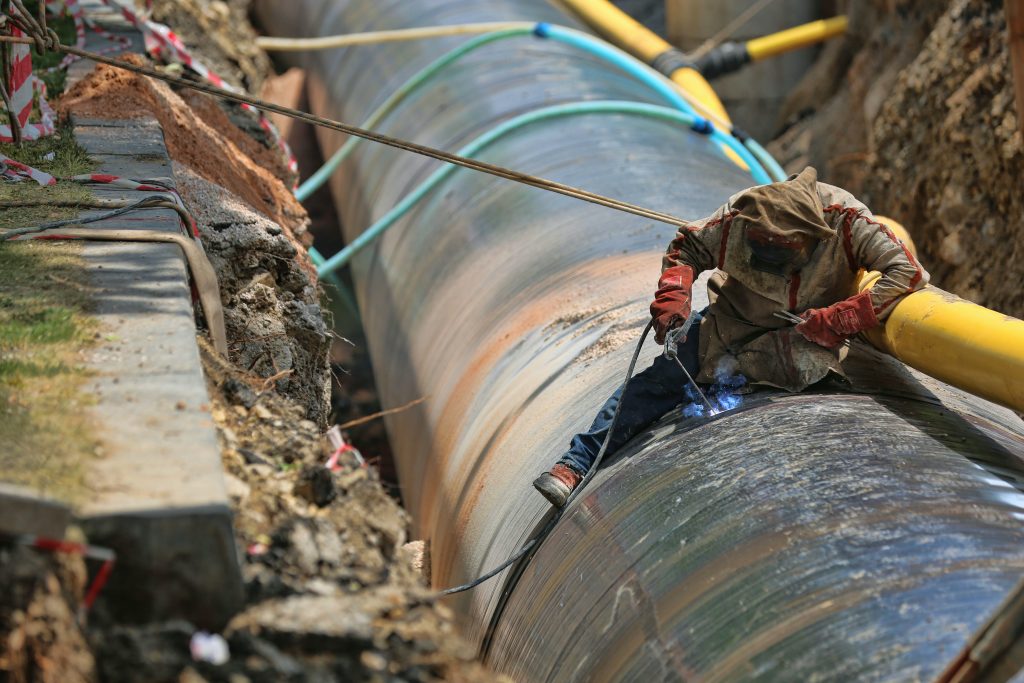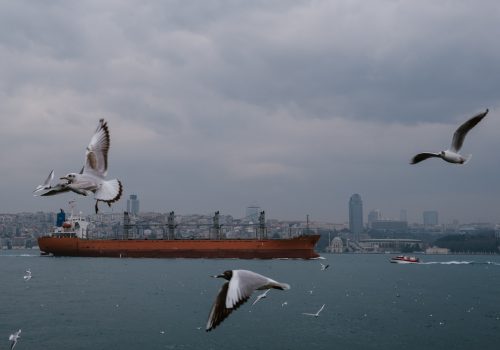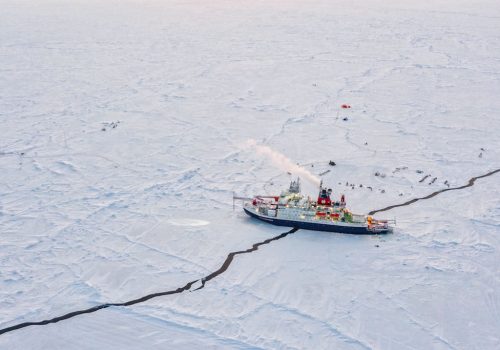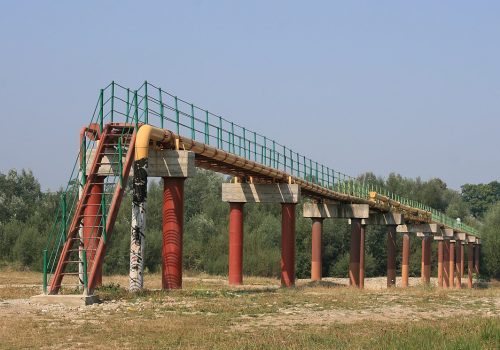On March 8, the European Commission, delivered the outline of its REPowerEU plan, which is aimed at securing a massive immediate reduction in EU consumption of Russian gas and goes on to make the somewhat vague claim that “phasing out our dependence on fossil fuels from Russia can be done well before 2030.”
The vagueness is inherent in the fact that the EU does not define what constitutes dependence on Russian energy. But the accompanying statement by Commission Ursula von der Leyen made it clear that a massive reduction is envisaged: “We must become independent from Russian oil, coal and gas. We simply cannot rely on a supplier who explicitly threatens us.”
The question, then, is how to replace a very big volume of gas with other gas, other energy sources, and demand reduction.
Referring to its July 2021 package which aims to reduce EU emissions by 55 percent in 2030, the Commission declared that its “Fit for 55” proposals already account for a reduction of 30 percent in annual fossil gas consumption by 2030, equivalent to 100 billion cubic meters (bcm) of gas.
But the plan’s most ambitious provision is the gradual removal of at least 155 bcm of gas use, around how much gas the EU imported from Russia in 2021. The statement claims that nearly two-thirds of this effort could be accomplished in a single year.
In effect, the EU is proposing to cut around 100 bcm from its total its total gas consumption this year, and, though this is not stated explicitly, most or even all of this reduction would come from Russia. That amounts to more than a quarter of its 2021 consumption of 379.9 bcm in 2021 and more than two-thirds of the 145 bcm that the EU imported from Russia in 2021.
But just how this is to be achieved has yet to be determined, with the EU’s statement simply saying: “The Commission proposes to work with Member States to identify the most suitable projects to meet these objectives, building on the extensive work done already on national Recovery and Resilience Plans.”
Our own assessment is that the EU, if it pushes very hard indeed, may be able to replace some 75 bcm of Russian gas this year, with about half of it coming from a combination of around 30 bcm of increased liquefied natural gas (LNG) supplies and 8 bcm of pipeline gas and the other half coming from reduced demand and additional wind and solar capacity replacing some gas-fired generating capacity.
Moreover, EU storage levels are far lower than average levels for this time of the year. Reserve replenishment is an EU priority, but to rebuild storage to levels seen over the last 5 years in time for the 2022-23 heating season, member states will need to inject around 20 bcm more gas by this October than last year. This only adds to the supply problems the EU is facing as it seeks to phase out its reliance on Russian gas.
While EU demand will encourage the development of major new ventures and the expansion of many existing projects for both natural gas itself and alternatives to natural gas, the most crucial aspect will be the timeframe for the implementation of new deliveries. What follows are the specific ways in which alternative gas supplies can help the EU achieve a radical reshaping of its gas balance over the next few years and the prospective timing for their potential impact on the EU’s overall gas balance.
Three timeframes are envisaged: the near term through 2022; the medium term through to 2024; and the long term from 2025. Examples summarized below are intended to be indicative of what can reasonably be expected to be on offer rather than an exhaustive assessment of all potential project options.
Near term (2022)
a.) LNG
Global LNG capacity will increase this year by an estimated 43 bcm. However, most of this is from plants which were operating at reduced capacity or shut down in 2021 due to technical issues. The only new capacity coming on is in the US: Train 6 at Sabine Pass was commissioned in February 2022 while Calcasieu Pass exported its commissioning cargo one month later.
Offshore Mozambique, the start-up of the 3.4-million-metric-ton-per-year (mtpa) Coral Sul Floating LNG project, using gas from Mozambique’s Rovuma Basin, is scheduled for the second half of 2022. The mooring of the giant 220,000-ton Coral Sul was completed on 4 March 2022.
b.) Pipelines
Already Europe’s second largest pipeline gas supplier and delivering both to continental Europe and the UK, Norway is producing at close to maximum levels. Flows have some seasonality, and more volume looks possible by prolonging winter export levels throughout the summer to continental Europe. Otherwise, with daily capacity through the pipelines to the continent full, the other option would be to try to raise volumes to the UK, where there is modest spare capacity, then export onwards to the continent via the interconnector pipelines between the UK and Europe.
Scope for more gas from North Africa looks limited. Algeria, which has pipeline links to Italy and Spain, is believed to have no immediate spare production capacity, and Libya probably has none either.
In terms of new developments, in Romania, Black Sea Oil & Gas (BSOG) has announced a production start-up in the second quarter of 2022 and is aiming for 1 bcma. BSOG has said that this is later than planned because of the “detrimental” legislation impacting adversely on energy sector investment. Delays on the Neptun project have been blamed on the same legislative environment.
The Southern Gas Corridor’s TAP pipeline started up in 2021 and ramped up during the year. This means that in 2022, it will be delivering more gas year-on-year than in 2021. It has been flowing daily at an annualized 11 bcma.
Turkmenistan, with significant stranded production capacity, has the ability to contribute, in the form of deliveries to Azerbaijan and Turkey, considerable volumes which could then free up LNG currently supplied to Turkey for export to European markets. This could happen in three ways:
- By immediately approving the construction of a 78-kilometer subsea pipeline to deliver 5 bcma to Azerbaijan from the existing Magtymguly field on its side of the Caspian.
- By immediately approving a doubling of the current swap arrangement with Iran and Azerbaijan from around 2-3 bcma to 4-6 bcma.
- By building on the fact that the first deliveries of Iranian gas to Turkey in 2001 were in fact Turkmen in origin to develop a similar swap system with Iran to deliver around 5 bcma to Turkey. Infrastructure constraints mean these are the likely maximum levels for swap arrangements.
c.) Demand side measures and substitution
The EU document targets a potential saving of 14 bcm from the residential sector. This could be realistic. Consumers throughout the EU have experienced very high gas prices for several months now, and they will be beginning to consider actions for winter 2022-23 to reduce consumption of gas and electricity (though energy subsidies and rebates are likely to lower demand elasticity to some degree).
On substitution, continued expansion of wind and solar capacity should allow a reduction in the call on gas-fired power. Increased coal imports, perhaps from the US, might provide some immediate relief. However, with the possible exception of some Balkan states, member states are not likely to see coal as more than an emergency measure because of its adverse impact on the climate.
Summarizing all the above, the EU target for 2022 of replacing around 100 bcm of Russian gas looks unachievable. There will be more LNG in the global market, but the EU will need to compete for it with Asia, and 30 bcm looks more realistic than the 50 bcm target. On the other hand, an additional 10 bcma of pipeline gas might be more feasible. On the demand side, the residential sector reduction could be realistic, but the added contribution from wind and solar cannot be totally relied upon, as it depends on the weather.
All in all, what the EU has described is a very tight balance, where everything earmarked has to work simultaneously. LNG capacity outages seen in 2021, or a pipeline compressor going down, for instance, would wreck the whole plan.
Medium term (2023 and 2024)
Given the pace of activity desired for 2022, the likelihood that not everything will be delivered on schedule, and the fact that very few supply projects are slated for completion—relatively speaking—this looks like being a period of consolidation.
Very little new LNG supply capacity is expected to come online. Off the shores of Senegal and Mauritania, Greater Tortue, with a capacity of 2.5 mtpa, is expected to start production in 2023. Mozambique’s FLNG Coral Sul should be ramping up too.
On the pipeline side, Turkmenistan’s Caspian Connector, if built in the second half of 2022, could be expanded by a further 5-7 bcma through modest additions to gas gathering infrastructure and compression on the Turkmen side.
In the Black Sea, Turkey’s Sakarya field has a target date for first gas in 2023, and this will likely be met since this marks the 100th anniversary of the Turkish Republic and no expense will be spared to ensure the start-up takes place on time. The project’s first phase is slated to deliver 10 million cubic meters per day (3.65 mtpa) but while some gas will be delivered next year, industry generally is highly skeptical that significant commercial volumes can be brought to shore much before the end of 2024 or even into 2025. The importance of this field for the EU is that while it might deliver some pipeline gas into southern EU, it will more likely enable LNG to be moved out of the Turkish market and into the EU.
Regarding Algeria, in April 2022, an agreement was signed between Italy’s Eni and Algeria’s Sonatrach, in the presence of Italian Prime Minister Mario Draghi, for increased deliveries via the TransMed Pipeline to Italy. While this is scheduled to start in late 2022, Eni has said the agreement actually provides for a gradual increase up to a maximum level of 9 bcma at some point in 2023 or 2024. Whether this is in fact feasible will depend very much on whether existing production facilities are capable of rapid debottlenecking in the next year or so, since there are no new facilities or expansion projects due to come online in this timeframe.
Long term (2025 and beyond)
3 to 4 years out gives an industry redeploying capital and skills the time to marshal the resources needed to meet the 2050 net-zero target, to regroup, and to attempt to sort out a new or expanded set of gas supply arrangements. It also allows time for more longer-wavelength demand-side actions to be effective and for renewables projects to be completed, subject to concrete positive policy interventions with real financial support on a scale heretofore unseen.
On the LNG side, an impressive number of projects are being built, all commissioning over late-2025 to early-2028. These include LNG Canada (14 mtpa), two more US Gulf Coast projects in Golden Pass (16 mtpa), and Driftwood (27.6 mtpa), along with no less than 32 mtpa coming from four new trains in Qatar. Overall, global LNG production capacity looks set to soar from around 450 mtpa today to more than 550 mtpa by 2028.
In Turkey, Sakarya should be on stream, with further development phases taking it to 14.6 mtpa by 2028.
One open question is Romania, and whether the Neptun Deep offshore Black Sea project in the Black Sea will go ahead. The field was discovered by ExxonMobil—in a 50-50 partnership with OMV Petrom—in 2012, and exploration work was completed in 2016. But onerous government conditions, notably a 2018 law imposing restrictive conditions and progressive taxation of revenues, prompted ExxonMobil to decide in December 2019 to pull out after spending around $750 million on the venture. However, the project is still being pursued as Romania’s natural gas company Romgaz agreed in November 2021 to purchase Exxon Mobil’s 50% stake for $1.06 billion. This makes it reasonable to suppose that a final investment decision on a production program will be taken in 2023 and that production might start around 2026-2027. The block has estimated reserves of 42-84 bcm, supporting a likely annual production of 5-6 bcm/y.
Conclusion
The resources summarized above will go some way towards helping EU pivot away from its reliance on Russian gas. However, while we see some significant progress possible this year, 2023 and 2024 are more likely to be years of consolidation, when things hoped for in 2022 might happen, before the start of new LNG projects in the years from 2025 onwards. Moreover, a lot more will need to be done in order to overcome various key obstacles. The focus on decarbonization and the emphasis on net-zero targets in recent years prompted considerable reductions in gas sector investment and the demobilization of key resources required for gas sector expansion. This weakens the ability of major industry players to ramp up gas production quickly in response to a very different set of geopolitical priorities. In effect, much of Europe was simply not prepared to pay the premium for an insurance policy that would safeguard against the loss of a major supplier.
Regasification in Europe will also be a crucial factor, with three main considerations. First, Spain and Portugal have the largest spare capacity, but this is bottlenecked for the rest of Europe by the small capacity of the Spain-France interconnector. Secondly, the UK also has spare capacity and the UK could immediately start to play a role as a gas bridge. But continental Europe’s access to this bridge will entail full use of the existing interconnectors. Thirdly, and by contrast, new regas capacity is a more medium-term option, since even with a fast-track approach, it will take 2-3 years to plan, approve, and build (or expand) either an FSRU or onshore facility, together with the connecting pipeline to the relevant main trunk system.
Other regional issues need to be addressed too. Not all the EU takes Russian gas. Germany is the main importer, while there is none going into Spain and Portugal. If Germany just stops taking any, then it will suffer an economic consequence which Spain will not. There will questions asked about burden-sharing should the economic pain fall primarily on Germany, the EU’s main engine.
In sum, the EU finds itself between a rock and a hard place. It wants to remove Russia from its gas balance and thus reduce or eliminate gas as a major source of Russian revenues. But with no easy alternatives, doing this overnight would cause enormous economic and social dislocations. It will require inventiveness, thoroughness, and shrewd planning to mitigate this tumult and push Russia out of the EU energy mix.
John Roberts is a nonresident senior fellow at the Atlantic Council Global Energy Center and a member of the UN Economic Commission for Europe’s Group of Experts on Gas.
Julian Bowden is a former economist with BP specializing in gas markets in SE Europe and the Caspian, and is a Senior Visiting Research Fellow with the Oxford Institute for Energy Studies OIES.
The authors acknowledge that they are on the advisory board of a project to lay a 78-kilometer connector pipeline between the Petronas-operated Magtymguly field in Turkmenistan and gas-gathering facilities operated by BP in the Azerbaijan’s Azeri-Chirag-Gunashli oilfield.
Related content on Russian gas
Learn more about the Global Energy Center

The Global Energy Center develops and promotes pragmatic and nonpartisan policy solutions designed to advance global energy security, enhance economic opportunity, and accelerate pathways to net-zero emissions.
Image: A worker helps put together a pipeline. (Selim Arda Eryilmaz, Unsplash, Unsplash License) https://unsplash.com/license




